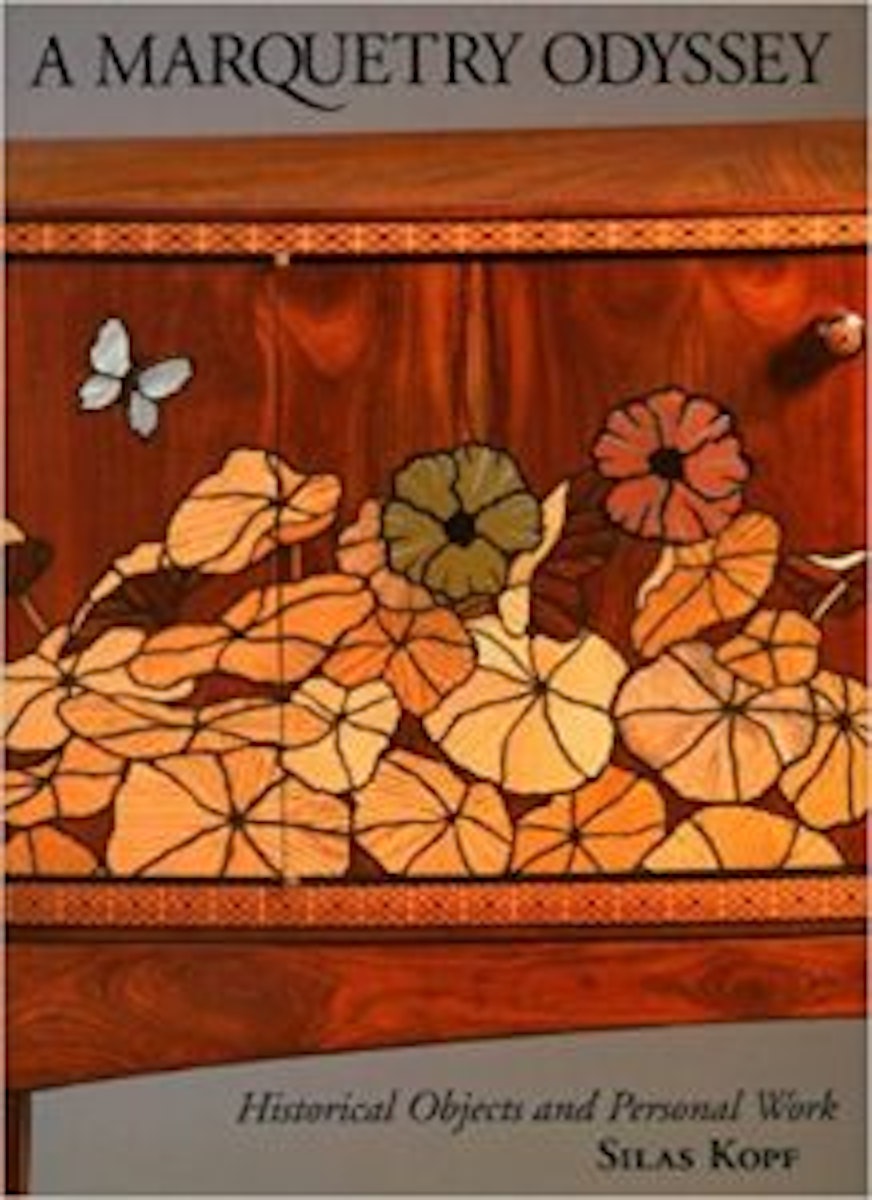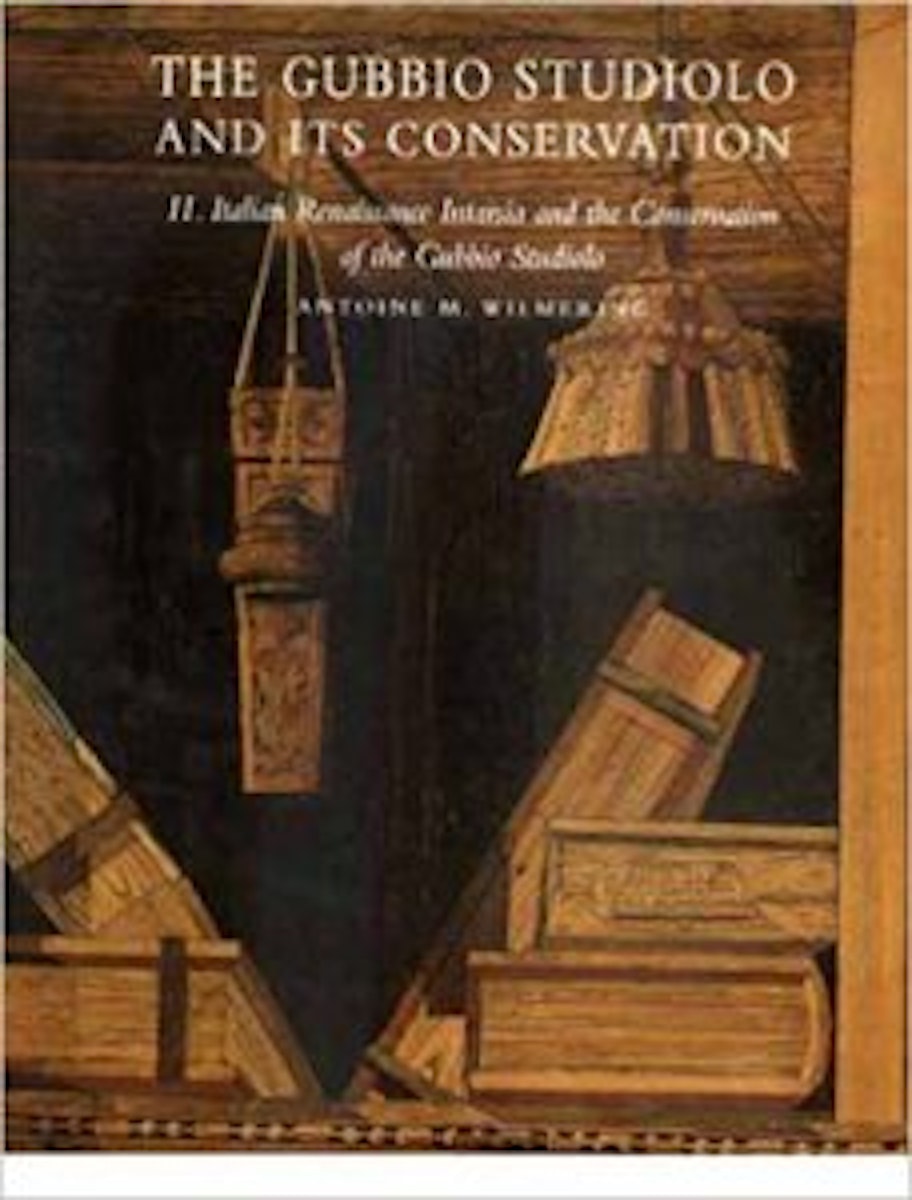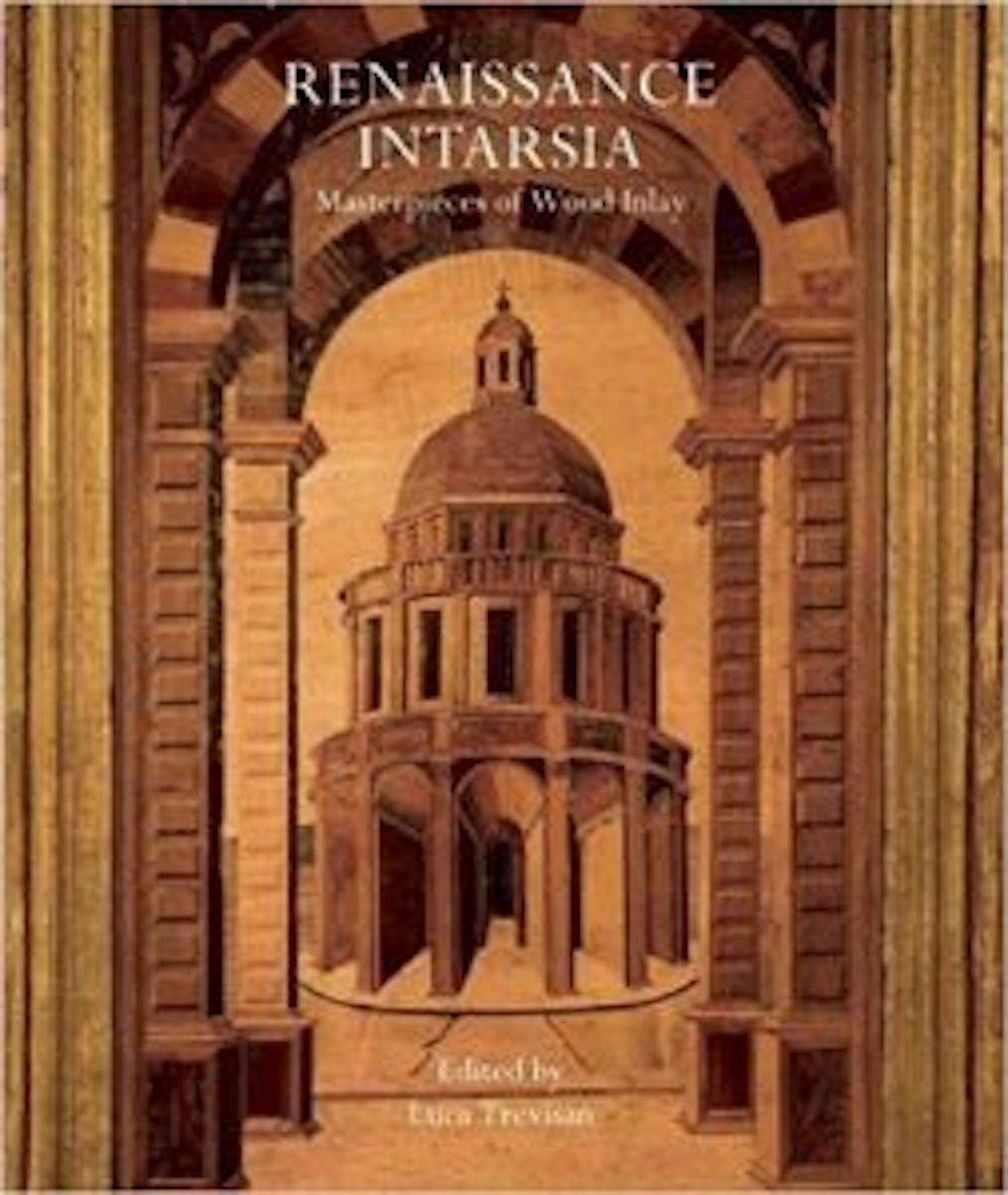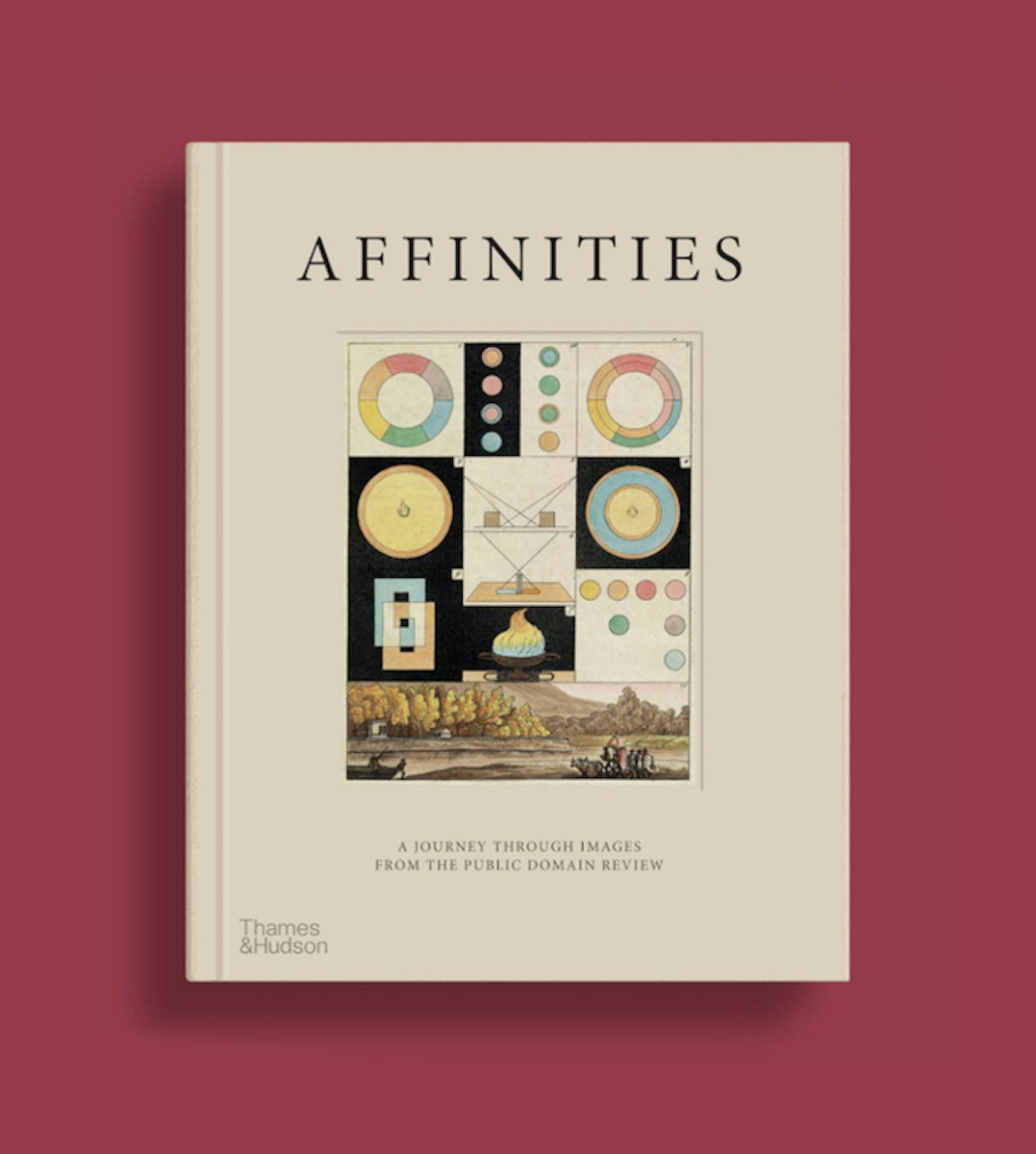
Exquisite Rot Spalted Wood and the Lost Art of Intarsia
The technique of intarsia — the fitting together of pieces of intricately cut wood to make often complex images — has produced some of the most awe-inspiring pieces of Renaissance craftsmanship. Daniel Elkind explores the history of this masterful art, and how an added dash of colour arose from a most unlikely source: lumber ridden with fungus.
May 16, 2018
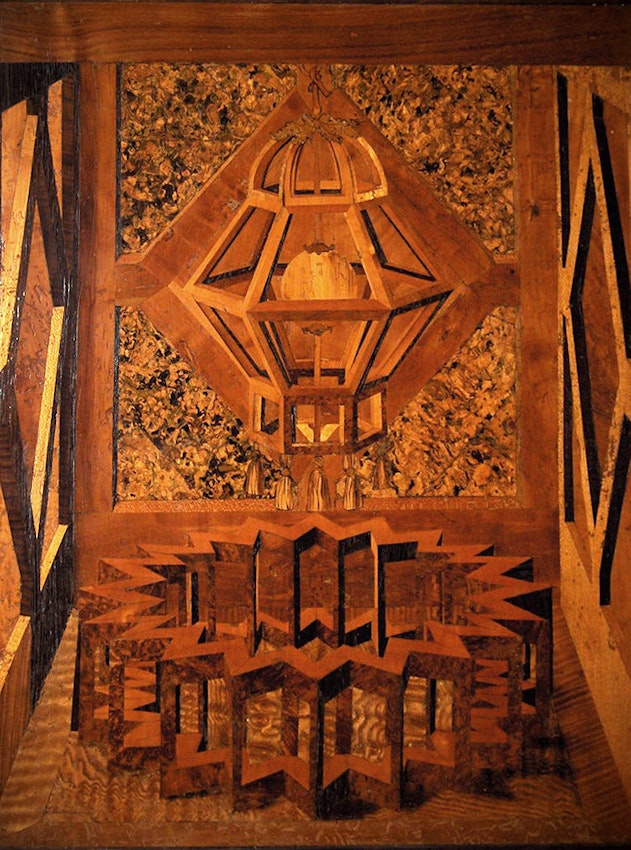 Scroll through the whole page to download all images before printing.
Scroll through the whole page to download all images before printing.Geometric figure (1537), intarsia by Fra Damiano da Bergamo, from the Museum of the Basilica of Saint Dominic, Bologna, Italy — Source.
There is a tale, perhaps apocryphal, in which Fra Damiano da Bergamo looks on as emperor Charles V — motto: Plus Ultra, “further beyond” — sands away at an area of intarsiated wood from a recently completed choir, a section inlaid with a variety of colored woods to appear as one unbroken composition. In Silas Kopf’s version, it is Fra Damiano’s stunning work at the Church of San Domenico in Bologna which has the emperor so mesmerized:
Charles thought the work was so beautifully done that it couldn’t possibly be made of pieces of wood, as he had been told, but rather that it had been painted. To assuage his curiosity, he took his sword and chopped out a bit of the panel. Confirming that the picture was in fact composed of wood pieces, Charles asked to meet the man who could do such work and was taken to Damiano’s studio. Apparently still not sure that the intarsia was not treated with paints, Damiano pulled out a hand plane and passed it over the panel he was working on, thereby shaving off the top layer of wood.1
Despite the obvious talent of the intarsiatori, the Florentine polymath Giorgio Vasari — considered by many the first art historian — famously dismissed their meticulous craft as “counterfeit painting”, which has “always been exercised by persons possessing more patience than skill in design.” Though “praiseworthy and masterly”, wooden inlay was nevertheless an extravagant waste of time, wrote Vasari, doomed to a short life “because of worms and fire”, noteworthy only insofar as it demonstrated the Renaissance fascination with perspective.2 In other words, a curiosity like pastiglia boxes or mother of pearl.
At best, Vasari and his contemporaries considered the so-called decorative arts derivative of the fine arts, painting and sculpture. But painting in wood is in many ways more complicated than painting on wood. Rather than fabricating objects from a single source, the art of intarsia is the art of mosaic, of picking the right tone, of sourcing only properly seasoned lumber from mature trees and adapting materials intended for one context to another. Painting obscures the origins of a given material, whereas intarsia retains the original character of the wood grain — whose knots and whorls are as individual as the islands and deltas of friction ridges that constitute the topography of a fingerprint — while forming a new image. From a distance, the whole appears greater than the sum of its parts; up close, one can appreciate the heterogeneity of the components.
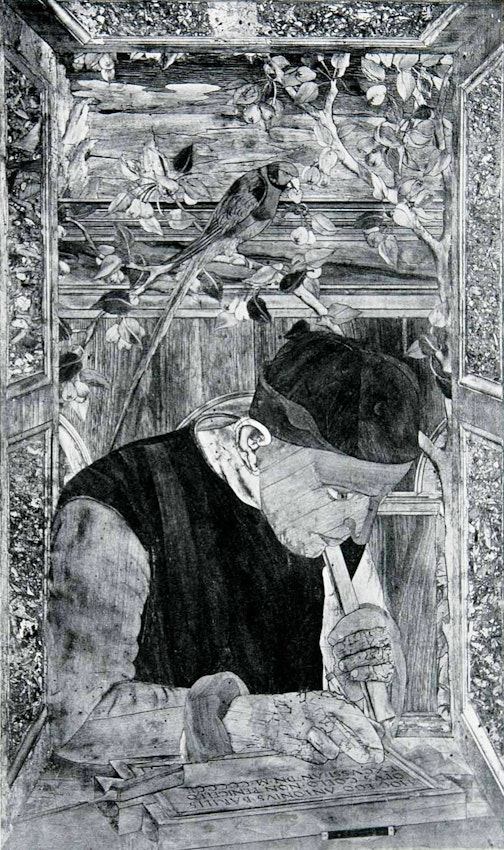 Scroll through the whole page to download all images before printing.
Scroll through the whole page to download all images before printing.Black and white photograph of an intarsia self portrait from 1502 by Antonio Barili — one of the great masters of the art — made with pear, beech, walnut, maple and palisander woods. Once held at the Museum of Art and Industry in Vienna, it was sadly destroyed during World War II — Source.
The aforementioned Charles, for example, had his motto inlaid on one of the flaps of an impressive writing cabinet built for him in around 1532 — a reification of his “invincible” reign and Spain’s recent success in the New World.3 More ornamental than practical, the “Plus Oultra” escritorio, now located at the Victoria and Albert Museum in London, has been called “an expression of the universal Christian empire of Charles V and the sacred imperialism of the Spanish Austrias.”4 Through this piece, we can trace not only the path intarsia traveled in Europe as it migrated north and west, but also its trajectory from the religious sphere to the secular, from totem of state to luxury item.
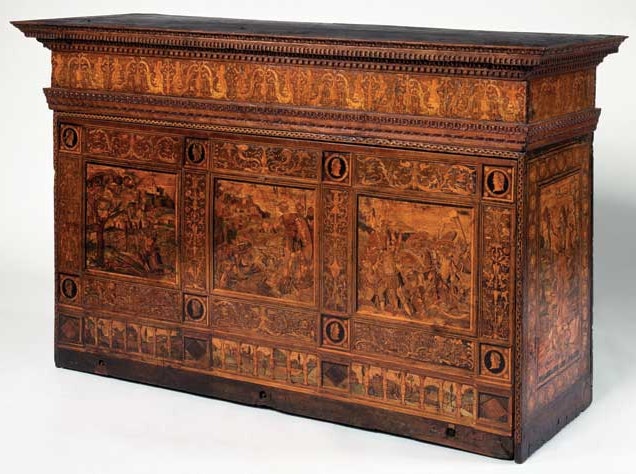 Scroll through the whole page to download all images before printing.
Scroll through the whole page to download all images before printing.Emperor Charles V’s “Plus Oultra Cabinet”, featuring intarsia panels and “walnut inlaid with various woods, probably spindlewood, ebony, poplar, ash, holly and a tropical hardwood”; front view of top section — Source.
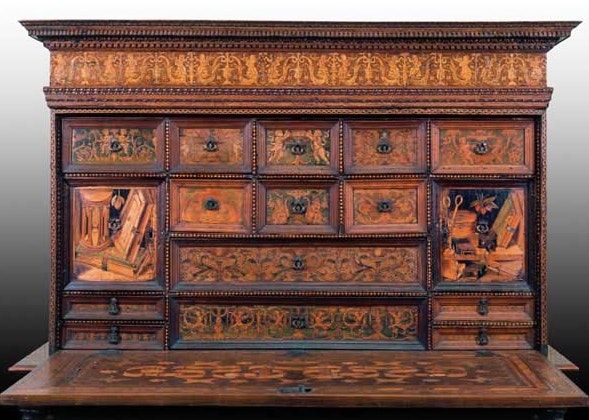 Scroll through the whole page to download all images before printing.
Scroll through the whole page to download all images before printing.Emperor Charles V’s “Plus Oultra Cabinet”, opened up — Source.
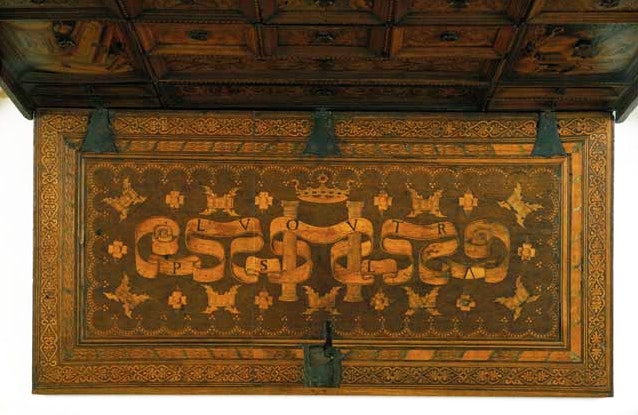 Scroll through the whole page to download all images before printing.
Scroll through the whole page to download all images before printing.Emperor Charles V’s “Plus Oultra Cabinet”, view of opened up panel featuring his motto on a scroll wound round the Pillars of Hercules, his personal emblem — Source.
From the beginning, intarsia has served as a projection of imperial singularity and superiority. According to Maurice Sven Dimand, the first specialized curator of Near Eastern art at the Metropolitan Museum, the technique arrived in the cathedrals of Europe via Andalusia and Sicily from the mosques and minarets of North Africa, where, due to the prohibition on graven images, it was useful in effecting complex calligraphic patterns and tessellations.5 More than mere ornamentation, the intricate tiling served as a unifying design element, as much a part of the architecture as a pillar or qubba (dome). One can still feel transported before lonely door panels and orphaned minbars (pulpits), as one marvels at the way these features summon the ineffable through sacred geometry from the Great Mosque of Kairouan in Tunisia (ca. 836) to the Alhambra in Spain.
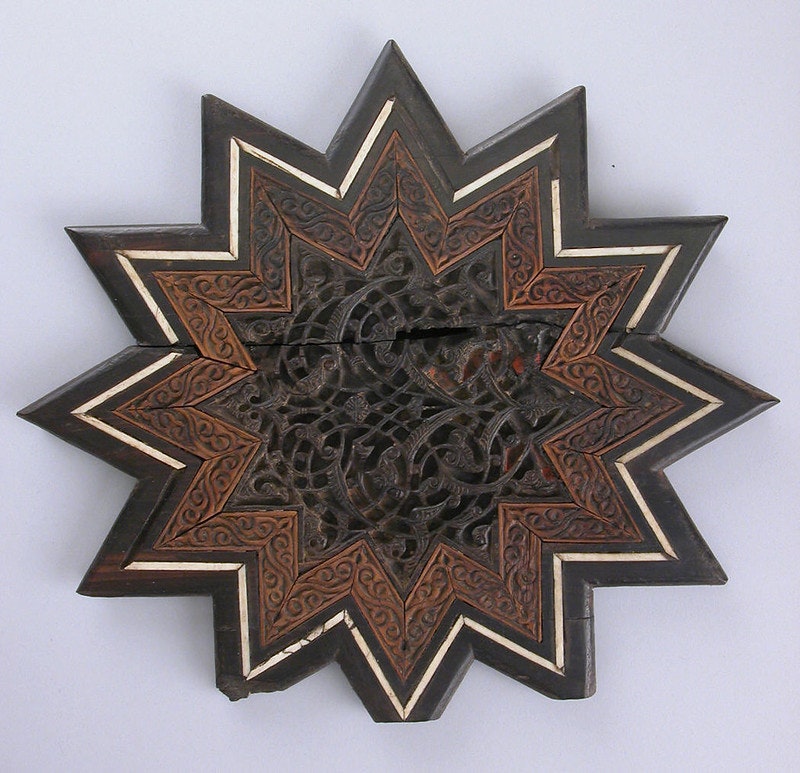 Scroll through the whole page to download all images before printing.
Scroll through the whole page to download all images before printing.Panel from a Minbar, Cairo (13th–14th century), carved wood inlaid with ivory and wood — Source.
The Gubbio studiolo (ca. 1478–82), considered perhaps the quintessential Italian Renaissance object and best known example of intarsia paneling, consists of a private study built for the contemplative benefit of Federico da Montefeltro. Montefeltro was undoubtedly one of the major condottiere of his day, a well-connected and well-read mercenary-entrepreneur nicknamed “the Light of Italy” who had another study built at his palace in Urbino where he would go to disappear “when he wanted to withdraw alone for serious study or with a privileged guest for profound conversation.”6 The duke possessed two things for which he was renowned: a library said to be second only to the pope’s, and one of the most famous Renaissance profiles — a big, beefy head with a tiny, broken nose — immortalised in a portrait by Piero della Francesca, author of the first major scientific treatise on perspective, De prospectiva pingendi (ca. 1475), one of the treasures of the duke’s library.
The panels portray various souvenirs of the duke’s wide reading in the arts and sciences, symbols of his earthly power, and pictorial allegories featuring the Liberal Arts. Pieces of the panels have gone missing, but in the intervening and fragmented lettered frieze, gorgeously rendered in gold Roman capitals on blue ground, some clues to the connection between the panels remain. As reconstructed by the art historian Olga Raggio, the full inscription would have read:
You see how the eternal students of the Venerable Mother/Men exalted in learning and in genius/Fall forward, suppliantly with bared head/and bended knee, before [the face of their parent]./With the help of Justice, reverend Piety prevails/and none regrets having submitted to his foster mother.7
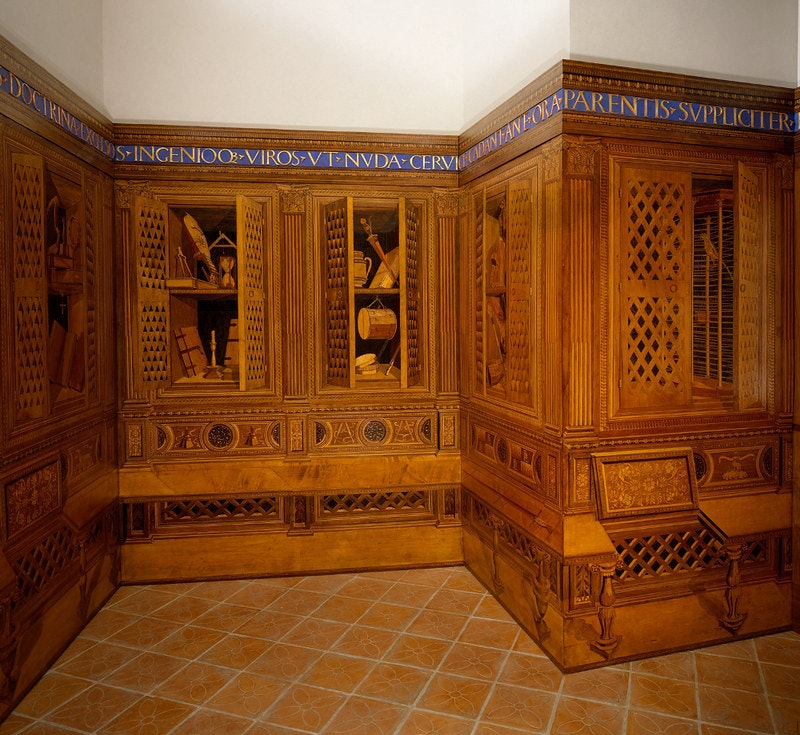 Scroll through the whole page to download all images before printing.
Scroll through the whole page to download all images before printing.Part of the Studiolo Gubbio as installed in the Metropolitan Museum — Source.
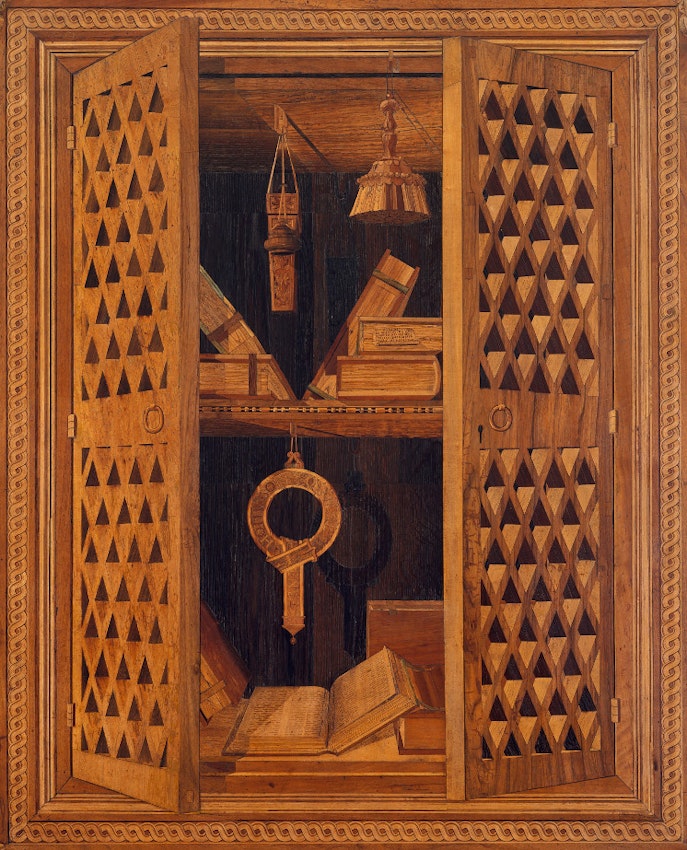 Scroll through the whole page to download all images before printing.
Scroll through the whole page to download all images before printing.Detail showing one of the many trompe l’oeil cupboards — Source.
 Scroll through the whole page to download all images before printing.
Scroll through the whole page to download all images before printing.Detail of a geometric ring (positioned just below the cupboard shown above) — Source.
Inspired by the New Testament and uninhibited by Mosaic proscription, craftsmen in the city of Siena began to introduce flora and fauna into their compositions in the 14th century. Figures and faces became common by the late fifteenth century and, by the early sixteenth century, intarsiatori in Florence were making use of a wide variety of dyes in addition to natural hardwoods to mimic the full spectrum from the lightest (spindlewood) to medium (walnut) and dark (bog oak) — with the tantalizing exception of an aquamarine color somewhere between green and blue which required treating wood with “copper acetate (verdigris) and copper sulfate (vitriol).”8
As Italian intarsia made its way north from Siena to Nuremberg and, during the early sixteenth century, to Augsburg in southern Germany, where it became known as “gesägte intarsia (sawn intarsia)”, it nevertheless “remained a closely guarded guild technique.”9 It was in Augsburg that naturally spalted wood — that is, wood that has been stained naturally, most often by some species of fungus — first became a regular source for intarsia work and the color palette was at last completed. Furnishings that featured slivers of griinfaule or “green oak” were especially prized by master cabinetmakers like Bartholomew Weisshaupt and coveted by the elite of the Holy Roman Empire.10
Breaking open rotting hardwood logs to reveal delicate veins of turquoise and aquamarine, craftsmen discovered that the green in green oak was the result of colonization by the green elf-cup fungus, Chlorociboria aeruginascens, whose tiny teal fruiting bodies grow on felled, barkless conifers and hardwoods like oak and beech across much of Europe, Asia, and North America. Fungal rot usually devalues wood, but green oak happened to fill a lucrative niche in a burgeoning luxury trade, and that made it, for a time at least, as precious as some rare metals. During the reign of Charles V, when the Hapsburgs ruled both Spain and Germany, a lively trade in these intarsia pieces sprang up between the two countries.
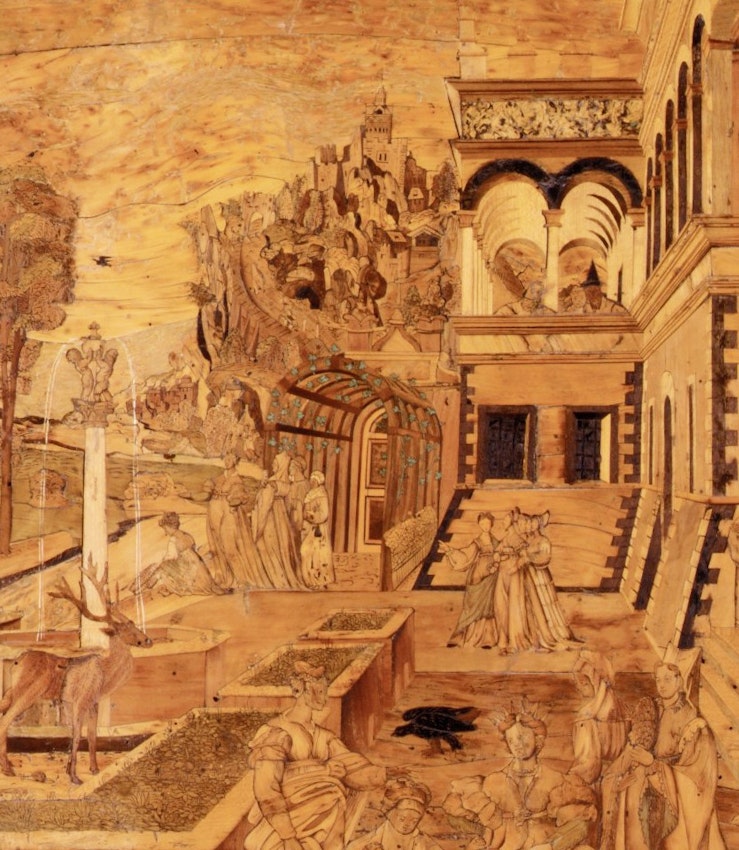 Scroll through the whole page to download all images before printing.
Scroll through the whole page to download all images before printing.Detail from an intarsia piece by Fra Damiano da Bergamo, early 16th century. Note the subtle dots of greenish-blue in the covered archway — Source.
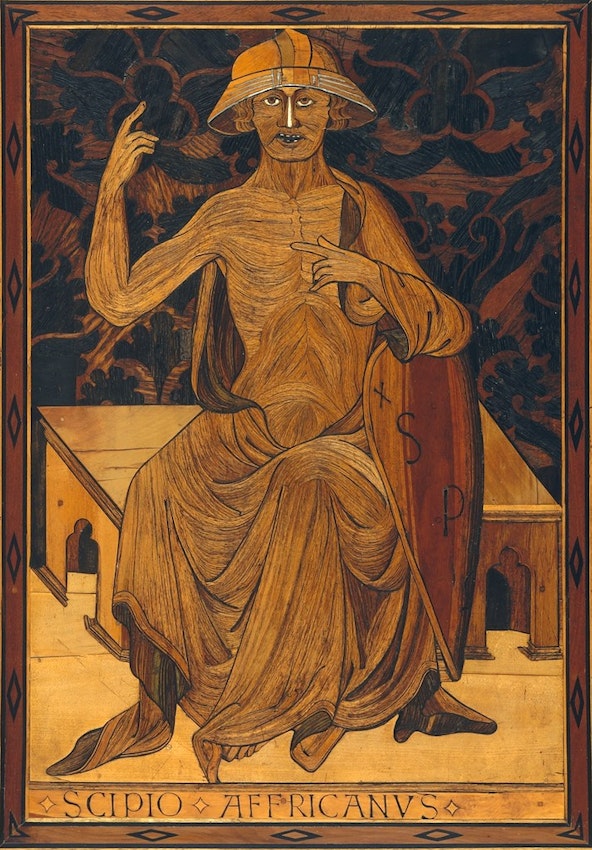 Scroll through the whole page to download all images before printing.
Scroll through the whole page to download all images before printing.Scipio Africanus (ca. 1425–30), intarsia by Mattia di Nanni di Stefano using poplar, bog oak and other wood inlay, rosewood, tin, bone, traces of green colouring — Source.
C. aeruginascens is an ascomycete, or sac fungi — aeruginascens means “becoming blue-green” — that is ideal for intarsia work because it grows on wood that has already been decomposed by white-rot fungi, the first-responders of the forest. (Timber has to rest before it can be used and was usually left on the forest floor for weeks or months at a time after being cut.) Arriving late to the party, so to speak, the teal fungus begins to spread throughout the wood in search of sugars, colonizing first the ray cells and then the vessels and fibers while releasing a secondary metabolite called xylindein, which is responsible for the brilliant turquoise color. Unlike dyes, which tend to concentrate in the vessels and fibers rather than ray cells, each piece of xylindein-stained wood appears uniquely, idiosyncratically mottled.11 And due to its stubborn refusal to oxidize or fade — a desirable trait known as colorfastness — it is also a mycological rarity: one of the few inedible mushroom-derived products to become a commodity.
Of course, blue-green is not the only shade of spalted wood: there’s red stain (Scytalidium cuboideum), yellow stain (Scytalidium ganodermophthorum), and many others. We also know that “legname verde” was first used by Florentine craftsmen to imitate natural elements like leaves, trees, water, green porphyry, and parakeet feathers, and that it appears in details of the Gubbio studiolo. We know that Fra Giovanni’s pupil Raffaele da Brescia used it to invigorate landscapes parched of variety by too much alder and ash, while Antonio Barili and Giuliano da Maiano used it to differentiate important details like book locks, textiles, and the vestments of the Virgin herself. So might there be other examples of intarsia containing C. aeruginascens hiding in plain sight?
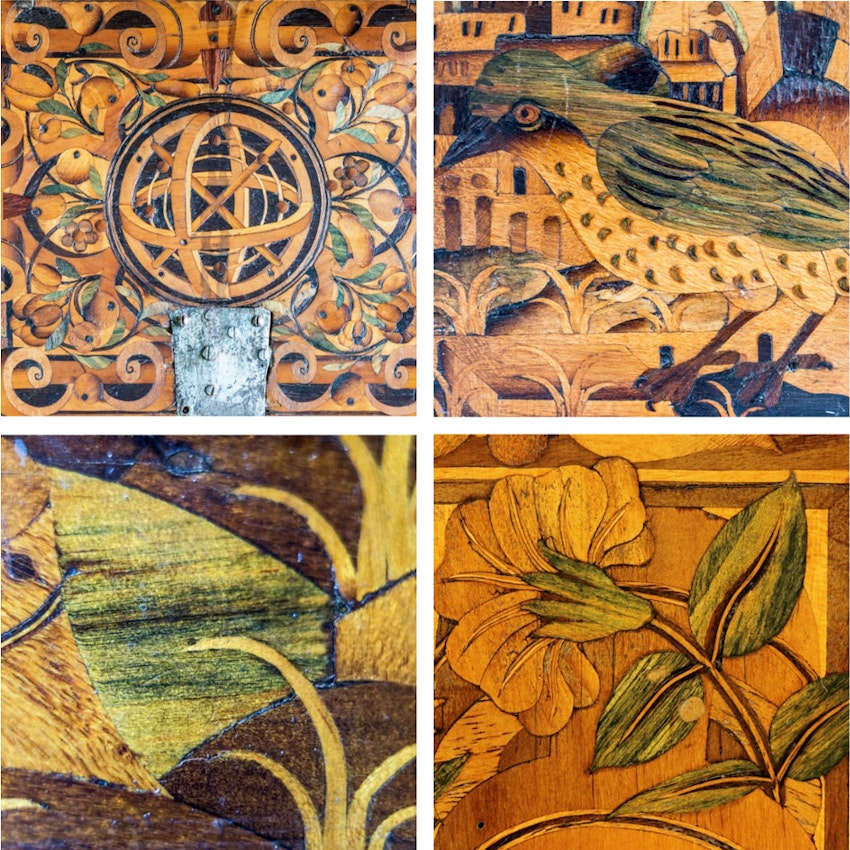 Scroll through the whole page to download all images before printing.
Scroll through the whole page to download all images before printing.Details of 16th-century German bureaus containing blue-green spalted wood in Spanish collections — Source.
In 1992, Robert Blanchette and his team received permission to analyze a green-stained panel from the Gubbio studiolo for the presence of fungal hyphae.12 This panel and another, attributed to Fra Giovanni, both turned out to be pieces of poplar that showed telltale signs of spalting along with the absence of any artificial pigments. (Destructive sampling of antiques is rarely allowed, so testing must consist of a visual comparison of key elements.) More recently, two researchers from the Department of Wood Science and Engineering at Oregon State University used the noninvasive method to extend the scope of analysis beyond Italy and Germany. Focusing on Spanish collections, they were able to determine that bureaus manufactured in Augsburg during the sixteenth century contained pieces of spalted wood, while “Spanish and Italian intarsia artifacts from the 1800s were found to only contain dyed wood.”13
With the advent of inorganic dyes the demand for spalted wood declined and the laborious practice of sourcing it largely fell out of favor. Though it would pop up now and again throughout history, particularly in Regency-era England in the form of Tunbridge ware — souvenir boxes with wooden inlay from the spa town of Tunbridge Wells in Kent — its heyday was past.14 One of those preindustrial alchemies like cochineal, a female scale insect from the New World that was at one time a valuable source of carmine — the color in the walls and doors of Van Gogh’s famous bedroom at Arles — now largely banished to the cabinet of curiosities.15 Though it seems like the mystery has evaporated and little is left to the imagination, it nevertheless strains credulity to seriously consider that the eyes of the parakeet which stare back at us from the walls of a Renaissance man cave may be the result — the wake — of a hungry fungus.
Daniel Elkind is a writer and translator in San Francisco.
Imagery from this post is featured in
Affinities
our special book of images created to celebrate 10 years of The Public Domain Review.
500+ images – 368 pages
Large format – Hardcover with inset image





